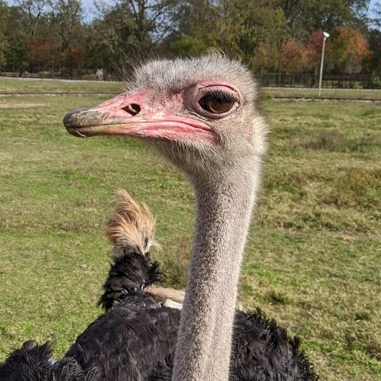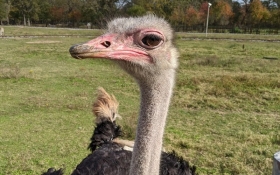
Ostrich
Struthio camelus
Animal Behavior: Ostriches live in flocks of 5 to 50, and they are normally found in the company of grazing animals like antelope and zebras. Flocks occupy territories of 2-15 sq km during the breeding season, which lasts around 5 months. Smaller, looser groups of 2-5 members are formed outside of the breeding season. Another characteristic of ostriches is that they are very fond of water. They frequently take baths when given the opportunity.
Eating Habits: Ostriches are herbivorous living mostly on plant matter, but they occasionally eat animal remains left by carnivorous predators. They are very selective feeders, taking the seed heads of grasses and certain flowers and seeds. They sometimes eat locusts. They can survive without water for long periods of time.
Range: Up until the mid 20th century, ostriches occurred naturally in southwestern Asia, the Arabian peninsula, and Africa. They have since been hunted to extinction except in sub-Saharan Africa.
Conservation Efforts: Ostriches were almost wiped out in the 18th century due to hunting for feathers. By the middle of the 19th century, the practice of farming ostriches began to spread. This enabled ostriches to be domesticated and plucked, instead of being hunted and killed. Currently, the demand for ostrich feathers has lessened greatly, and ostriches seem to have a secure population.
Animal Facts: Ostriches are the largest living birds. Ostriches do well in captivity and may live up to 50 years both in and out of the wild. Their powerful legs are their main defense against natural enemies. They can achieve speeds of up to 40 miles per hour, and if cornered they can deliver a powerful blow with their legs.
